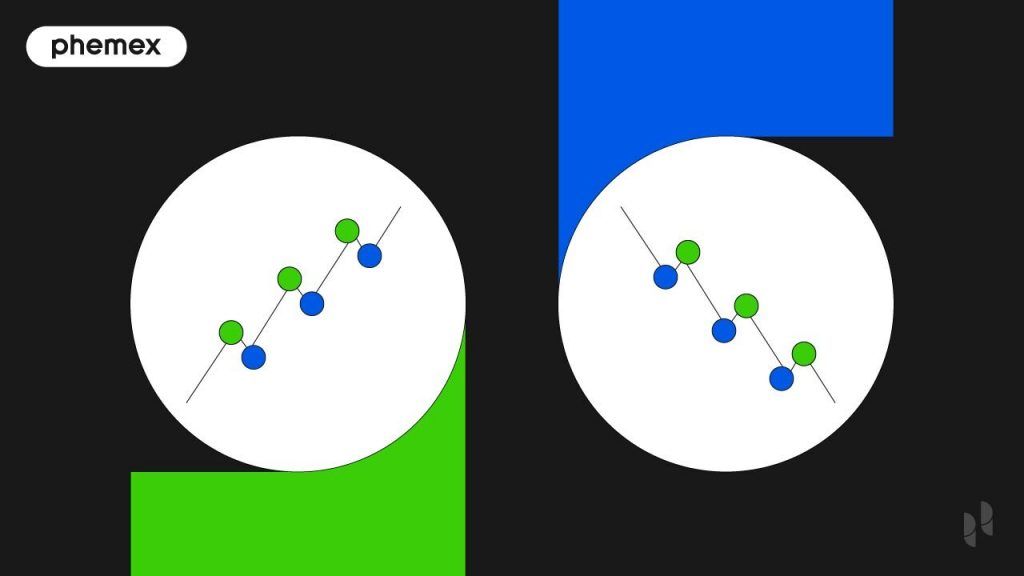Summary
- The on-balance volume (OBV) indicator is a cumulative momentum indicator that uses trading volume to predict asset price changes.
- A rising OBV indicates positive volume pressure that can lead to higher prices, and conversely, a falling OBV registers negative pressure that can foretell lower prices.
- When the OBV line breaks the support or resistance levels, traders can use these breaks to generate actionable signals.

The indicator was first introduced in 1963 by Joseph Granville in his book, Granville’s New Key to Stock Market Profits.
The core proposition behind the OBV indicator is that trading volume influences asset prices in a peculiar and somewhat predictable manner. Namely, a rising OBV indicates positive volume pressure that can lead to higher prices, and conversely, a falling OBV registers negative pressure that can foretell lower prices.
In summary, the OBV indicator is used in technical analysis to gauge bullish or bearish market sentiment or measure the buying and selling pressure by considering the asset’s trade volumes.
However, today, the OBV indicator is used more to inform traders of the type of participants currently trading the assets. For example, suppose the volume increases, but the price remains relatively flat (at first). In that case, this is considered an indication that institutional or more sophisticated traders are buying up the assets that retail traders are selling — only to sell them back to retail as soon as the prices shoot up.
To better understand what OBV really is and what it indicates, we first need to explain how OBV works and how it’s calculated.
How Is OBV Calculated?
The OBV is calculated using the information of the closing price and the trading volume of an asset. The formula used to calculate OBV is pretty straightforward:
OBV = OBVprev ± trading volume
where:
OBV = Current on-balance volume level
OBVprev = The level for the on-balance volume indicator for the previous day
Trading volume = The latest trading volume amount (can be positive, negative, or zero)
From here, calculating the current OBV requires following the three rules as outlined below:
- If today’s closing price is higher than yesterday’s closing price, then today’s volume is added to the previous OBV to get the current OBV.
Current OBV = Previous OBV + Today’s volume
- If today’s closing price is lower than yesterday’s closing price, today’s volume is subtracted from yesterday’s OBV.
Current OBV = Previous OBV – Today’s volume
- If today’s closing price equals yesterday’s closing price, then the current OBV equals yesterday’s OBV.
Current OBV = Previous OBV
As it can be seen from the formulas presented above, OBV is a cumulative indicator, meaning the volume is added to the cumulative OBV total on up days and subtracted from the OBV total on down days.
The critical thing to understand here is that the exact numerical value of the OBV indicator is not important when it comes to generating trading signals. The OBV is first and foremost a momentum indicator, which means that the slope and the direction of the indicator’s trend line matter more than its absolute value.
how OBV works?
Interpreting the On-Balance Volume indicator is as straightforward as calculating it: when the volume on up days outpaces the volume on down days, we can see that the OBV rises, and when the volume on down days is stronger, the OBV falls.
From here on, the core idea behind Granville’s OBV theory is that the price of the asset should follow the trading volume.
In practical terms, chartists or technical analysts can expect prices to move up if the OBV increases while the prices stay flat or moving down. Conversely, they can anticipate the prices to move lower if the OBV is falling while the prices are either flat or moving up.
How To Trade The OBV Indicator in The Crypto Market
Technical traders primarily use the OBV indicator to identify trend confirmations and trend reversals (divergence).
If the OBV is distinctly moving in one direction, this could indicate to traders that a significant price move in the same direction could be forthcoming.
For example, suppose the on-demand volume for Bitcoin accelerates upwards without being followed by a correspondent move in Bitcoin’s price. In that case, this could tell traders that a big uphill move in Bitcoin’s price is approaching, which would then prompt them to follow the trend and long the asset.
To capitalize on the information gathered from the OBV indicator, technical traders first need to define the trend for the OBV, then determine whether the current OBV trend matches the trend of the underlying asset, and finally — look for potential support or resistance levels and chart them out.
When the OBV line breaks the support or resistance levels, traders can use these breaks to generate actionable signals.
On balance volume breakout and Trend confirmations
The OBV is one of the best momentum indicators traders can use to confirm price trends for upside breakouts or downside breaks.
The logic behind this method is simple. If the asset’s price is rising in conjunction with the volume, it signals an explicit confirmation of the trend line. For example, if both the volume and the price of Bitcoin are going up in unison, the theory suggests that traders should expect the trend to continue further.
Another thing to consider concerning trend confirmations is the slope of the OBV line. A price trend accompanied by an OBV line with a steeper slope often means an increase in the trend’s strength, indicating buy pressure or that more investors are looking to enter the market.
To further validate the trend line and get more conclusive results, Granville also recommends combining the OBV with the 20-period moving average indicator.
Trend Reversals (Divergence)
Traders can use the OBV to generate bullish or bearish divergence signals to anticipate trend reversals. A typical example of bullish divergence is when the OBV trend line moves up while the asset’s price falls. On the other hand, a bearish divergence occurs when the OBV moves down or forms a lower low while the price moves higher or creates a higher high.
The OBV indicator can anticipate potential trend reversals because it gives traders a better look at the real market sentiment. When the OBV moves higher, this indicates growing sell pressure, meaning that the bulls are getting weaker. On the other hand, when the OBV is going down, it means that buying pressure is beginning to accumulate and that bears are losing momentum.
Limitations of OBV
While the OBV indicator is undoubtedly a valuable, easy-to-use technical tool that can be applied to all markets, like all other tools, it has its limitations.
Whales can throw off the OBV indicator
The main limitation of the OBV indicator is that high-speed traders, market makers, and big institutional players can easily manipulate trading volumes, which can throw off the indicator for extended periods and make it produce misleading signals.
Traders who aren’t careful and rely solely on the OBV indicator to predict the markets may suffer significant losses due to this factor.
The information generated by the OBV indicator is limited
An additional downside of the OBV indicator is that it’s a leading indicator, meaning that it produces signals but doesn’t reveal much about the underlying causes. The information generated by the indicator is limited, and hence inconclusive in terms of price analysis data. Traders relying exclusively on signals generated by the OBV indicator are actually taking a leap of faith with every trade.
Conclusion
The on-balance volume (OBV) indicator is a simple technical tool that uses volume and price to measure buying and selling pressure and to predict future price movements.
Technical traders can use the OBV indicator to confirm underlying trends or spot trend reversals.
As with all indicators, the OBV shouldn’t be relied upon too heavily when making trading decisions. Instead, traders should use it as a supplementary tool in conjunction with other indicators such as the 20-day MA and momentum oscillators to gauge market sentiment and analyze market structure more effectively.
Read More
- What Is Volume Oscillator (VO) in Crypto Trading?
- What Is Crypto Trading Volume: How It Affects Price
- How to Trade Bitcoin with Volume Profile
- What Is Net Volume Index: Indicator Of Real Market Sentiment
- Understanding Trading Volume in Ranges and Trends
- What is Balance of Power (BOP) Indicator: Measure the Strength of Buying and Selling Pressure
- Open Interest vs. Volume: What Are They and How Do They Work?
- What is Ease of Movement (EMV) Indicator: How Volume Affects Price








